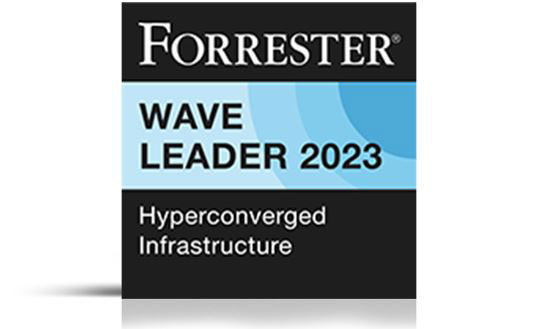THE FORRESTER WAVE™: HYPERCONVERGED INFRASTUCTURE, Q4 2023.

The 11 Providers That Matter Most And How They Stack Up
October 24, 2023
Brent Elliswith Lauren Nelson, Sara Sjoblom, Peter Harrison
Summary
In our 36-criterion evaluation of hyperconverged infrastructure (HCI) providers, we identified the most significant ones and researched, analyzed, and scored them. This report shows how each provider measures up and helps infrastructure professionals select the right one for their needs.
Topics
- Flexibility, Scalability, Security, And Resilience Matter Most
- Evaluation Summary
- Vendor Offerings
- Vendor Profiles
- Evaluation Overview
- Supplemental Material
Flexibility, Scalability, Security, And Resilience Matter Most
Enterprise infrastructure leaders are increasingly managing more complex environments that balance workload support across multiple data center, public cloud, and edge environments. There is a growing need for abstraction across platforms, advanced levels of resiliency, improved security, and resource deployment patterns that maximize resource utilization and reduce total cost of ownership — not just for infrastructure but also the applications that consume it. Hyperconverged infrastructure vendors are rapidly iterating on existing platforms to meet these needs by improving flexibility, scalability, security, and resilience features within their products.
As a result of these trends, infrastructure professionals should look for HCI solutions with:
- Advanced snapshot and replication capabilities. These capabilities are essential to creating resilient replicas of running workloads. Features like immutability enable restore capabilities in the case of a ransomware attack. Many disaster recovery, high-availability (HA), and security features depend on the underlying snapshot and replication capabilities of the HCI solution.
- Disaggregated scaling of storage and compute resources. Independent scaling of compute and storage resources in a cluster gives infrastructure professionals the flexibility to add the resources they need, whether they are compute-focused nodes or storage-focused nodes. Infrastructure professionals only buy the required resources for a cluster, rather than having to purchase nodes with both compute and storage resources. Disaggregation also helps address application licensing costs for enterprise software that requires licensing all available CPUs or CPU cores in a compute cluster by excluding the CPUs dedicated to storage-heavy nodes.
- Comprehensive virtualized network function (VNF) support. Enabling technologies like stretch clustering, cloud replication, and advanced security requires a solid software-defined networking (SDN) stack with comprehensive VNF support, such that networks can stretch across cloud, data center, and edge environments. NAT, QoS, load balancing, routing, and switching are necessary elements for the hyperconverged SDN stack to support. VNFs also enable security-related functions like micro segmentation, packet inspection, and network encryption to support Zero Trust strategies for data and workloads.
Evaluation Summary
The Forrester Wave™ evaluation highlights Leaders, Strong Performers, Contenders, and Challengers. It’s an assessment of the top vendors in the market; it doesn’t represent the entire vendor landscape.